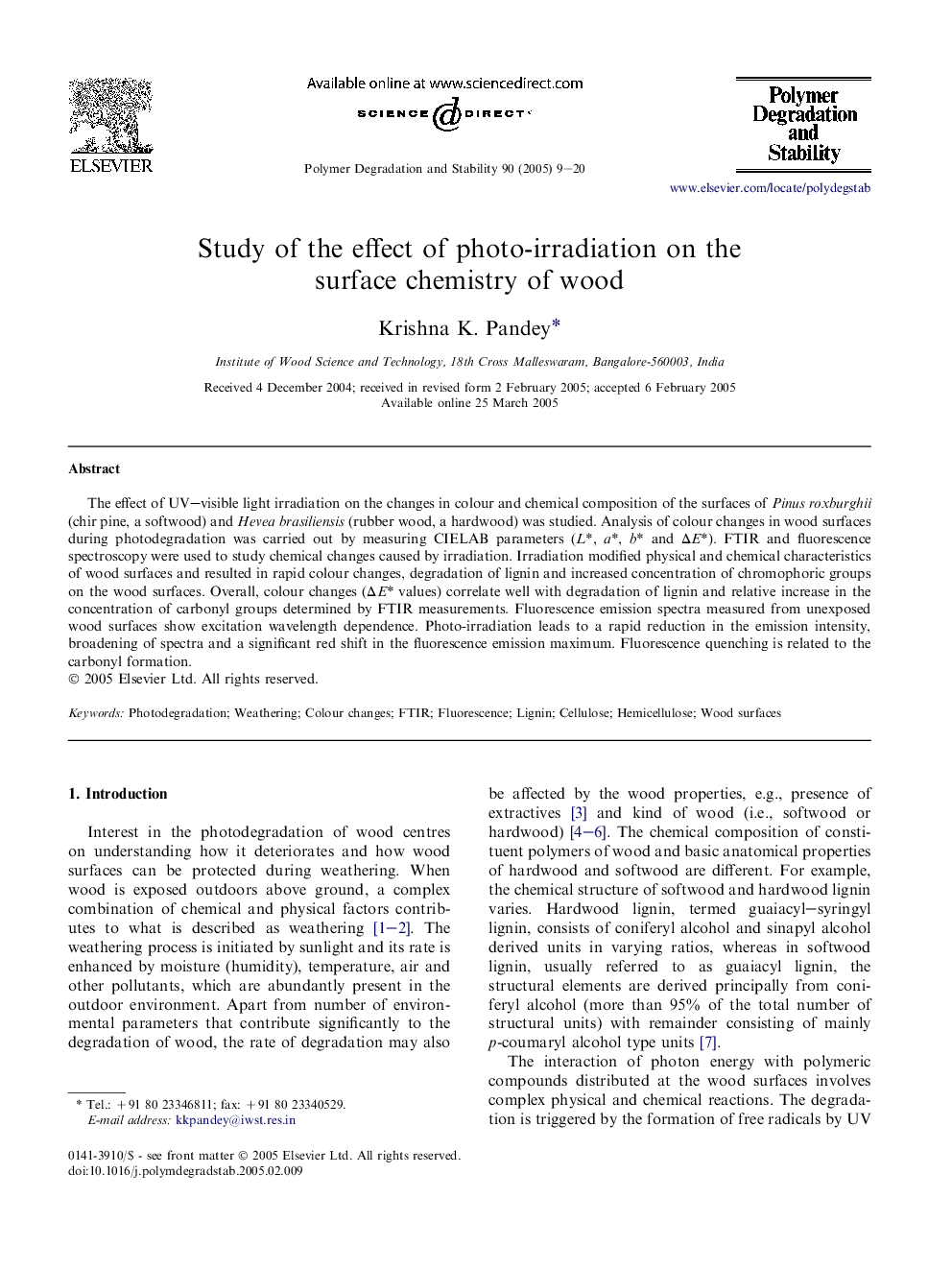| Article ID | Journal | Published Year | Pages | File Type |
|---|---|---|---|---|
| 9560521 | Polymer Degradation and Stability | 2005 | 12 Pages |
Abstract
The effect of UV-visible light irradiation on the changes in colour and chemical composition of the surfaces of Pinus roxburghii (chir pine, a softwood) and Hevea brasiliensis (rubber wood, a hardwood) was studied. Analysis of colour changes in wood surfaces during photodegradation was carried out by measuring CIELAB parameters (L*, a*, b* and ÎE*). FTIR and fluorescence spectroscopy were used to study chemical changes caused by irradiation. Irradiation modified physical and chemical characteristics of wood surfaces and resulted in rapid colour changes, degradation of lignin and increased concentration of chromophoric groups on the wood surfaces. Overall, colour changes (ÎE* values) correlate well with degradation of lignin and relative increase in the concentration of carbonyl groups determined by FTIR measurements. Fluorescence emission spectra measured from unexposed wood surfaces show excitation wavelength dependence. Photo-irradiation leads to a rapid reduction in the emission intensity, broadening of spectra and a significant red shift in the fluorescence emission maximum. Fluorescence quenching is related to the carbonyl formation.
Keywords
Related Topics
Physical Sciences and Engineering
Chemistry
Organic Chemistry
Authors
Krishna K. Pandey,
